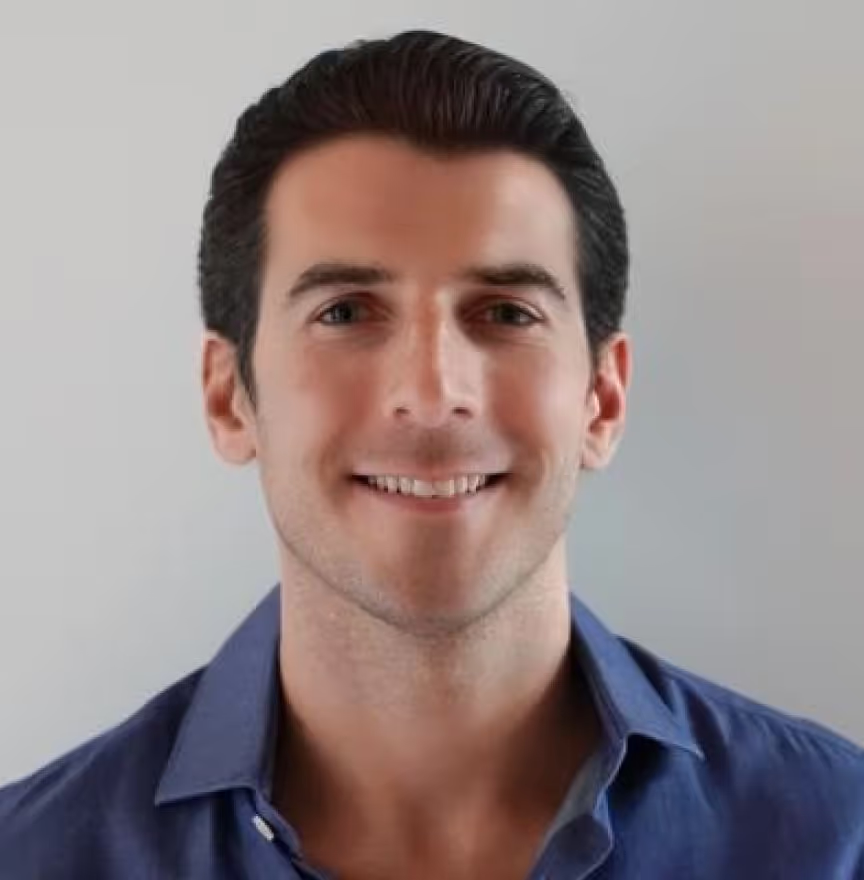A 2 minute assessment to get a personalized mental health or alcohol recovery plan.
Binge drinking affects 57.9 million Americans monthly—but research shows 75% of people who address problematic drinking successfully recover when they use evidence-based approaches.
What You'll Discover:
- Why your brain makes stopping after one drink neurologically difficult (not a personal failure)
- Behavioral strategies proven to reduce binge drinking episodes
- Environmental changes that support recovery and reduce temptation
- FDA-approved medications that significantly reduce binge drinking
- How to combine approaches for maximum effectiveness
- What to do when you slip up and how to get back on track
The first thing to know is that binge drinking—defined as four or more drinks for women or five for men within two hours—sends 488 Americans to their deaths every single day. This pattern affects 57.9 million people monthly, making it the most common form of excessive drinking in the United States.
The encouraging news: research shows that 75% of people who address problematic drinking successfully recover, and emerging treatments combining behavioral strategies with medication are proving remarkably effective.
Binge drinking causes 178,000 deaths annually—a 29% increase since 2016—and costs the U.S. economy $249 billion per year. Beyond statistics, binge drinking damages your brain, increases cancer risk, strains relationships, and can progress into alcohol use disorder.
All that said, here's what most people don't know: your brain's reward system makes stopping after one or two drinks neurologically difficult—it's not a personal failure. Once you understand the science behind why moderation feels impossible, you can access treatments that work with your brain chemistry rather than against it.
Why Your Brain Makes "Just One Drink" So Difficult
So, is it really about willpower? The short answer is no—stopping binge drinking has little to do with willpower. Alcohol hijacks your brain's reward circuitry, creating a neurological challenge.
When you drink, alcohol triggers a cascade of endorphins that flood your brain's nucleus accumbens with dopamine, creating intense feelings of pleasure and euphoria. This neurological reward is powerful and immediate, which is why that first drink often leads to a second, third, and fourth.
The Prefrontal Cortex Problem
The prefrontal cortex—responsible for executive control and decision-making—becomes progressively impaired as your blood alcohol concentration rises. This creates a dangerous paradox: the more you drink, the less capable you become of exercising the judgment needed to stop drinking.
Research using neuroimaging shows that binge drinkers develop altered brain activation patterns, requiring greater neural effort to maintain impulse control even when sober.
Structural Brain Changes
Over time, repeated binge drinking episodes cause measurable structural changes in the brain. Studies document reduced gray matter volume in the frontal lobe, temporal lobe, and hippocampus—regions critical for memory, decision-making, and emotional regulation.
White matter integrity becomes compromised, particularly in areas connecting different brain regions. For adolescents and young adults whose brains are still developing through their late twenties, these effects are especially concerning.
The Good News: These Changes Are Reversible
With that in mind, research demonstrates that abstinence or significant reduction in drinking allows the brain to recover, with improvements visible within 3-12 months. Understanding that your struggle with binge drinking has biological roots removes shame and opens the door to treatments that address these underlying mechanisms.
Behavioral Strategies That Reduce Binge Drinking Episodes
Evidence-based behavioral interventions show consistent effectiveness in reducing binge drinking. The most successful strategies share common elements: they increase awareness, build specific skills, and create concrete plans for high-risk situations.
Cognitive Behavioral Therapy (CBT)
Cognitive behavioral therapy stands as one of the most thoroughly researched approaches, with meta-analyses showing outcomes 15-26% better than untreated controls.
How it works - CBT helps you identify triggers—stress, social anxiety, boredom, or specific locations—and develop alternative coping responses. The technique involves functional analysis (mapping when, where, and why you drink), cognitive restructuring (challenging beliefs like "I need alcohol to have fun"), and skills training (learning drink refusal techniques and managing cravings).
What the research shows - Studies show that changes in coping skills quality, not just frequency, predict long-term success. The effects are durable, maintaining moderate effectiveness even at 12-month follow-ups.
Motivational Interviewing
Motivational interviewing takes a different approach—meeting you where you are rather than demanding immediate change. This collaborative, non-judgmental method has shown effect sizes of 0.18 compared to no treatment, increasing to 0.60 for interventions with follow-up within three months.
Why it works - MI helps you articulate your own reasons for change rather than being told why you should quit. This process of "eliciting change talk" creates internal motivation that proves more powerful than external pressure.
Practical application - Brief motivational interventions of just 1-4 sessions show measurable reductions in drinking frequency and intensity, making this approach particularly accessible.
Mindfulness-Based Interventions
Mindfulness-based interventions address the emotional and stress-related drivers of binge drinking. An 8-week mindfulness-based relapse prevention program showed significant reductions in heavy drinking days maintained at both 20-week and 32-week follow-ups.
The key technique - "Urge surfing"—observing cravings without acting on them—teaches you that intense urges peak and decline naturally within minutes. Even ultra-brief mindfulness interventions of just 11 minutes have demonstrated measurable reductions in alcohol consumption among at-risk drinkers.
Self-Monitoring and Tracking
Tracking your drinking proves surprisingly effective. Self-monitoring increases awareness and naturally reduces consumption, with studies showing significant decreases in both drinking levels and psychological distress at 3-month follow-ups.
Simple methods work - Mark each drink on a phone app, use a paper tracking card, or calendar marking. The act of recording before drinking increases mindfulness about consumption patterns and makes "autopilot" drinking less likely.
Brief Interventions
Brief interventions—single sessions of just 15-60 minutes—consistently show 10-20% reductions in consumption lasting up to six months. These typically include screening, personalized feedback on your drinking patterns, education about health risks, and goal-setting.
The most effective brief interventions incorporate motivational interviewing techniques and personalized normative feedback showing how your drinking compares to others. Even these minimal interventions produce meaningful results with impressive cost-effectiveness ratios.
Environmental Changes That Support Recovery
Your physical and social environment profoundly influences drinking patterns. Making strategic environmental modifications reduces temptation and creates conditions that support healthier choices.
Remove Alcohol from Your Home
The strategy - Start by removing alcohol from your home entirely during the early stages of reducing binge drinking. This eliminates the most immediate source of temptation and removes the need for constant decision-making.
When complete removal isn't possible - Limiting quantities and avoiding your preferred drinks reduces consumption. Studies show that increased effort required to obtain alcohol—even small barriers—meaningfully decreases drinking.
Modify Your Social Network
Social network modification plays a critical role in recovery. Research consistently shows that spending time with heavy drinkers during early recovery significantly increases relapse risk.
What this means - This doesn't necessarily mean ending friendships, but rather temporarily limiting time in drinking-focused settings while building a sober support network. Tell trusted friends and family about your goals; social support improves treatment retention and outcomes.
How to communicate - Many people find that being direct—"I'm taking a break from drinking" or "I'm working on my relationship with alcohol"—garners more support than they anticipated.
Change Your Routine
Changing your routine disrupts automatic drinking patterns. If you typically stop at a bar after work, take a different route home. Replace drinking occasions with alternative activities that provide different rewards: exercise releases endorphins, creative pursuits provide engagement, and social activities not centered on alcohol build new associations.
Research shows that individuals invested in meaningful alternative activities—whether art, nature exploration, or community involvement—show significantly better outcomes.
Identify High-Risk Situations
The process - Identify your high-risk situations through systematic analysis. Common triggers include stress, social events, weekends, celebrations, and negative emotions.
Plan ahead - Once identified, you can develop specific plans for each scenario. Having alcohol-free zones (like your bedroom or car), scheduling drink-free days (many people choose weekdays), and planning responses to common situations dramatically reduce impulsive drinking.
Join Support Groups
Support groups provide powerful environmental support. While Alcoholics Anonymous is most well-known, alternatives include SMART Recovery (using science-based techniques), Women for Sobriety, and Celebrate Recovery.
An 8-year follow-up study found that 46% of those with professional help and 49% of AA members remained sober, compared to significantly lower rates for those without support. Regular attendance—ideally weekly—correlates strongly with better outcomes.
The Medication Option Most People Don't Know Exists
Here's what the vast majority of articles about stopping binge drinking fail to mention: three FDA-approved medications can significantly reduce binge drinking episodes, yet fewer than 1 in 10 people who could benefit from them ever receive them.
This massive treatment gap represents one of medicine's most underutilized interventions.
Naltrexone: The Gold Standard for Binge Drinking
Naltrexone, approved by the FDA since 1994, works by blocking opioid receptors in your brain. This prevents the release of endorphins when you drink alcohol, essentially eliminating the euphoric reward that drives continued drinking.
What the research shows - A landmark 2022 study published in the American Journal of Psychiatry found that naltrexone reduced binge-drinking days by 26%, decreased weeks with any binge drinking by 17%, and cut total monthly alcohol consumption by 31%. Perhaps most remarkably, these effects persisted six months after treatment ended.
How it works - The medication comes in two forms: a daily 50mg oral tablet or a monthly injection. The daily version typically costs around $1.60 per dose when purchased in bulk, making it highly cost-effective.
Side effects - Side effects are generally mild and temporary—primarily nausea and headaches that typically resolve within the first week. Importantly, naltrexone is not addictive and doesn't make you sick if you drink (unlike disulfiram or Antabuse).
The Sinclair Method: Targeted Dosing
What makes naltrexone particularly promising for binge drinking is the targeted dosing approach, sometimes called the Sinclair Method. Instead of taking medication daily, you take naltrexone one hour before anticipated drinking occasions.
The advantage - This approach specifically targets binge episodes while allowing flexibility. Studies show 78% success rates in achieving "extinction"—the gradual loss of desire to drink—after several months. The number needed to treat is just 12, meaning for every 12 people who take naltrexone, one person who would have continued heavy drinking will stop.
Who benefits most - Naltrexone works best for the 90% of binge drinkers who don't have severe alcohol use disorder. If you're someone who can abstain during the week but struggles with control on weekends, or who binges occasionally but isn't physically dependent on alcohol, naltrexone may be ideal.
Harm reduction approach - It supports harm reduction goals—reducing drinking rather than requiring total abstinence—which research shows leads to meaningful health improvements even without complete sobriety.
Other FDA-Approved Medications
Two other FDA-approved medications deserve mention:
Acamprosate - Normalizes alcohol-related changes in brain activity and works best for maintaining abstinence in people who have already stopped drinking. It requires taking pills three times daily, which challenges compliance.
Disulfiram - Causes unpleasant reactions if you drink, creating a deterrent effect, but requires supervised administration to be effective and doesn't address the underlying neurochemistry of cravings.
The Treatment Gap Problem
Despite strong evidence, medication-assisted treatment remains severely underutilized. Only 2.4% of adults with alcohol use disorder received any medication in 2024, and only 7.9% received any treatment at all.
Barriers include lack of clinician knowledge, stigma around medication for alcohol problems, and patient unawareness that these options exist. This represents a massive public health failure, as meta-analyses show that medical costs decrease by $3,649 among patients receiving AUD medication compared to those without.
How to Get Naltrexone
You can obtain naltrexone through your primary care physician—you don't need a specialized addiction psychiatrist. The conversation might feel uncomfortable, but physicians increasingly recognize alcohol use disorder as a medical condition requiring medical treatment.
If your doctor isn't familiar with naltrexone for binge drinking, you can direct them to resources from the National Institute on Alcohol Abuse and Alcoholism (NIAAA).
Combining Approaches for Maximum Effectiveness
The most successful outcomes emerge when multiple strategies work together. Research consistently demonstrates that combining behavioral therapy with medication produces better results than either alone.
A comprehensive approach addresses both the psychological habits and the neurobiological drivers of binge drinking.
A Stepped Approach
So, what should you do first? Consider a stepped approach that matches intervention intensity to your needs.
Step 1: Self-Help Strategies - If you're in the early stages of addressing binge drinking, start with self-help strategies: tracking your consumption, identifying triggers, setting specific limits (like "maximum three drinks, only on weekends"), and using drink refusal skills. Add environmental modifications by removing alcohol from home and communicating your goals to friends.
Many people find success at this level without professional intervention.
Step 2: Brief Professional Intervention - If self-help approaches prove insufficient after several weeks, add brief professional intervention. A single session with a counselor trained in motivational interviewing or brief alcohol intervention can provide personalized feedback and structured goal-setting that accelerates progress.
Many primary care offices, college health centers, and community health organizations offer these services affordably.
Step 3: Combined Medication and Therapy - For those with more established patterns or who have tried unsuccessfully to cut back on their own, combining cognitive behavioral therapy with naltrexone represents an evidence-based gold standard. CBT provides the skills and awareness while naltrexone addresses the neurochemical reward system.
This combination shows enhanced efficacy compared to either monotherapy in multiple studies.
Digital Tools as Supplements
Digital tools extend and support professional treatment. Smartphone apps allow daily tracking, provide reminder notifications, offer coping techniques in real-time, and connect you with virtual support communities.
While digital interventions alone show modest effects, they serve as valuable supplements to other approaches. Research shows that individuals using digital interventions consume four fewer grams of alcohol daily and experience 0.17 fewer drinking days per week.
Persistence and Adaptation
The key is persistence and adaptation. If one approach doesn't work, try another. The 75% recovery rate among people who address alcohol use disorder tells us that success is the norm, not the exception—but the path varies by individual.
Some people achieve sustained moderation, while others ultimately find that abstinence works better for them. Both represent valid, successful outcomes.
What to Do When You Slip Up
Relapse or "slips" are common in the recovery process—approximately 40-60% of people reducing drinking will have episodes where they return to old patterns. This doesn't represent failure; it's a normal part of behavior change for most people.
What matters is how you respond.
Recognize the Difference Between a Lapse and Relapse
First, recognize the difference between a lapse (a single episode) and a full relapse (return to consistent problematic drinking). One night of binge drinking after weeks of moderation doesn't erase your progress.
The abstinence violation effect—where one drink leads to "I've already blown it, might as well keep drinking"—is a cognitive distortion, not reality.
Analyze Without Self-Judgment
Analyze what happened without self-judgment. What triggered the episode? Were you in a high-risk situation without adequate planning? Did stress, negative emotions, or social pressure play a role? Were there early warning signs you missed?
This analysis transforms a setback into learning that strengthens your recovery.
Restart Immediately
Restart immediately. The longer you delay getting back on track, the more difficult it becomes. If you're taking naltrexone, resume your medication schedule. If you were attending support groups, return to the next meeting. If you were using tracking apps, input the data honestly—tracking tools work best with complete accuracy, including difficult information.
Consider Intensifying Your Approach
Consider whether you need to intensify your approach. Multiple slips may indicate that your current strategy isn't sufficient. This might mean adding medication if you're trying behavioral approaches alone, increasing therapy frequency, or considering whether abstinence might be easier than moderation for you personally.
The Path Forward: Turning Knowledge Into Action
Your struggle with binge drinking comes from how alcohol affects your brain's reward system, not from any character flaw. Once you understand that, evidence-based strategies give you multiple pathways to success.
Assess Your Drinking Pattern
Start by honestly assessing your drinking pattern over the past month. How many times did you have four or more drinks (women) or five or more (men) in a two-hour period? What situations or emotions preceded these episodes?
This baseline awareness guides which interventions to prioritize.
Set Specific, Measurable Goals
Set a specific, measurable goal. Rather than vague intentions like "drink less," commit to concrete targets: "No more than two drinks per occasion, maximum twice per week" or "No drinking Sunday through Thursday, maximum three drinks on weekend nights."
Research shows specific goals produce better outcomes than general intentions.
Choose Your Primary Strategy
Choose your primary intervention strategy based on your situation. If you're someone who can often moderate successfully but struggles in specific situations, brief intervention or motivational enhancement might suffice.
If you've tried repeatedly to cut back on your own without success, seriously consider naltrexone combined with behavioral therapy. If stress and emotional regulation are primary drivers, mindfulness-based approaches or CBT would be most appropriate.
Build Your Support System
Build your support system before you need it. Tell trusted friends and family about your goals. Research support group options in your area or online. Identify a healthcare provider who can prescribe medication if needed.
Having these supports in place before a crisis dramatically improves outcomes.
Remember: Harm Reduction Is Valid
Remember that reducing binge drinking produces measurable health benefits even if you don't achieve perfect abstinence. Dropping from eight drinks twice weekly to four drinks twice weekly significantly reduces your risk of liver disease, certain cancers, cognitive decline, and injury.
Harm reduction is a valid, evidence-based goal that improves your health and longevity.
You're Not Alone
With 57.9 million Americans currently struggling with binge drinking, you're far from alone in this challenge. The encouraging reality: three-quarters of people who address problematic drinking successfully recover, and emerging treatments combining behavioral strategies with medications like naltrexone are making recovery more achievable than ever.
The question isn't whether you can change your relationship with alcohol—evidence shows you absolutely can. The question is which evidence-based approach will work best for you, and when you'll take the first step toward that change.
If you're ready to understand your drinking patterns better and explore whether medication-assisted treatment might help, a quick confidential assessment can provide clarity on your options. Many people find that understanding the science behind their binge drinking—and discovering that effective medical treatment exists—provides the breakthrough they've been searching for.




